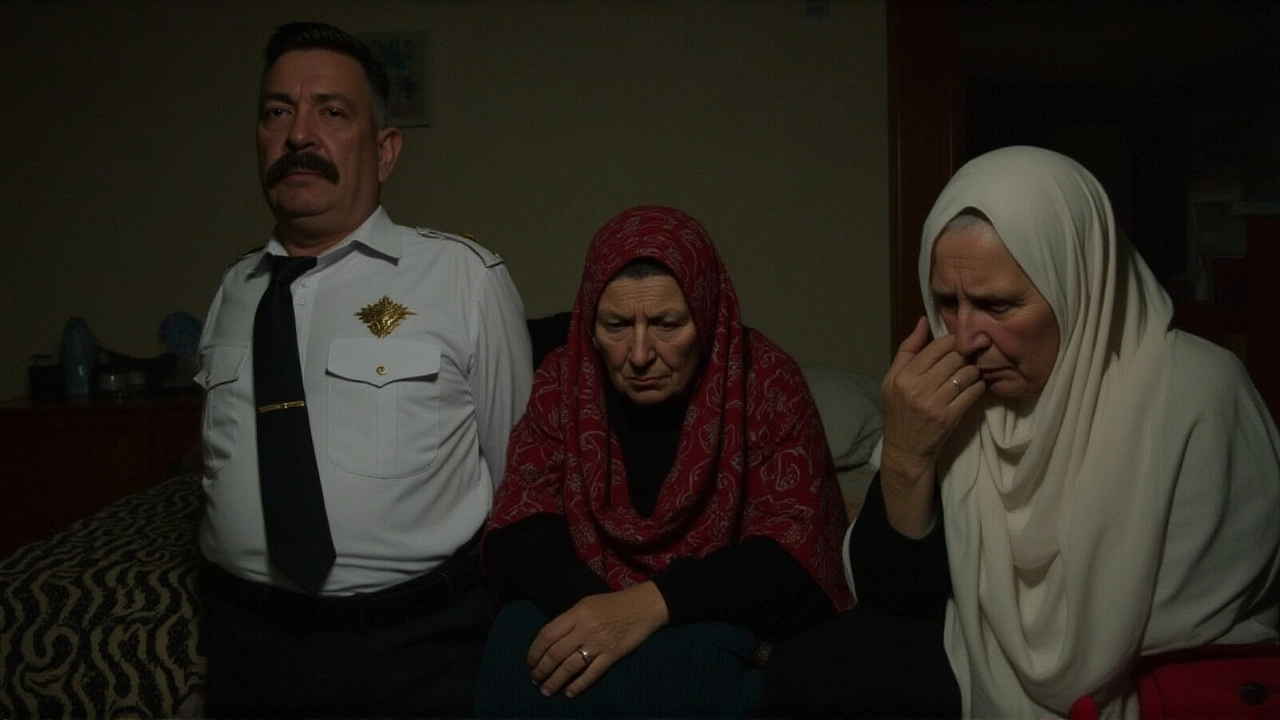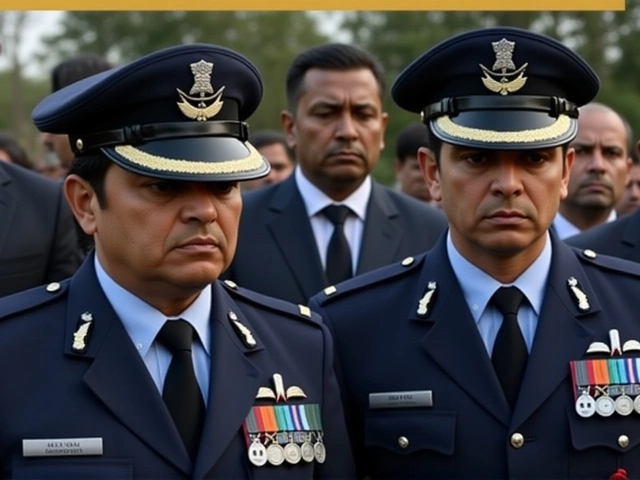At 2:10 p.m. local time on Friday, November 21, 2025, a Hindustan Aeronautics Limited-built Tejas fighter jet plummeted from the sky during a high-speed aerial display at the Dubai Airshow 2025Dubai, killing Wing Commander Naman Syal, a decorated pilot of the Indian Air Force. The crash, witnessed by thousands of spectators and broadcast live, sent shockwaves through India’s defense community and the global aerospace sector. Within minutes, the IAF confirmed the tragedy on X (formerly Twitter): "Today, during an aerial display at the Dubai Airshow, an IAF Tejas aircraft crashed. The pilot has lost his life. The IAF is deeply saddened and stands firmly with the grieving family." It was the first fatal crash involving a Tejas pilot since the aircraft’s first flight in 2001.
What Happened During the Aerial Display?
The Tejas, performing a high-G maneuver at low altitude, suddenly rolled violently and dove into the ground. Eyewitnesses described a flawless routine—tight loops, rapid climbs, and sharp turns—until the jet appeared to lose control mid-roll. No smoke, no engine fire, no ejection signal. Just silence, then impact. The Wing Commander Naman Syal, 34, was a veteran of over 800 flight hours and a key member of the IAF’s aerobatic display team. Colleagues called him "calm under pressure," a pilot who could read the jet like an extension of his own body.
Retired Captain Anil Gaur, a defense analyst with decades of jet experience, told ANI: "The nature of this crash suggests either a G-induced loss of consciousness—or a sudden control system failure. At those speeds, just 0.2 seconds of delayed input can be fatal. And if the pilot blacked out, the jet doesn’t know it’s supposed to pull up." The Tejas is known for its agility, but that same agility makes it unforgiving in tight maneuvers. The aircraft’s fly-by-wire system, while advanced, has been scrutinized since its early days for occasional software glitches under extreme stress.
Investigation Underway with Global Scrutiny
Within hours of the crash, the Indian Air Force dispatched a senior officer to Dubai to join the UAE-led accident investigation team. The flight data recorder—commonly called the black box—was recovered intact from the wreckage. Analysts say it will reveal critical data: G-forces experienced, throttle position, control surface inputs, and whether the pilot initiated an ejection sequence. The UAE’s Civil Aviation Authority is handling the physical investigation, but India has insisted on full access to all findings.
"This isn’t just about one pilot or one jet," said a senior IAF source on condition of anonymity. "The Tejas is India’s flagship defense export. If this was a systemic flaw, it could ripple across contracts with the Philippines, Argentina, and even NATO partners considering procurement. We need answers—fast." The Hindustan Aeronautics Limited confirmed it has deployed its chief engineers to Dubai and pledged "full cooperation." Meanwhile, HAL’s stock dropped 7.3% on the Bombay Stock Exchange the next trading day.

A Legacy of Resilience—and Risk
The Tejas program has been a symbol of India’s push for self-reliance in defense. First flown in 2001, it’s now the backbone of the IAF’s frontline squadrons, with over 10,000 sorties logged without a single pilot fatality—until now. The only previous fatal incident occurred in 2004, when a prototype crashed during a test flight, but the pilot ejected safely. Since then, the aircraft has undergone 14 major upgrades, including improved radar, avionics, and a more powerful GE F404 engine.
"The Tejas isn’t perfect," admitted former IAF Chief Air Marshal (Retd.) Rajesh Kumar. "But it’s not broken. This was a tragic accident, not a design failure. We’ve had crashes in F-16s, Rafales, even Su-30s during airshows. The difference? We didn’t stop flying them. We learned." Still, the timing couldn’t be worse. India is preparing to sign a $1.2 billion deal with a Southeast Asian nation for 16 additional Tejas Mk-1A jets. The crash has cast a shadow over that deal—and over the confidence of international buyers.
Bringing Him Home
On Saturday night, November 22, 2025, the body of Wing Commander Naman Syal was flown back to India aboard an IAF C-130J Super Hercules. His remains arrived at Sulur Air Force Station in Tamil Nadu, where a solemn military reception awaited. Flags flew at half-mast across all IAF bases. His wife, a schoolteacher, and their two young children were flown in from Bengaluru.
"He didn’t fly for glory," said his squadron commander in a private letter read at the memorial. "He flew because he believed in what this jet represented—for him, for his country, for every engineer who built it. He wasn’t just a pilot. He was the soul of the Tejas program."

What Comes Next?
The Indian Air Force has ordered a Court of Inquiry, which will take 45 to 60 days to complete. Meanwhile, all Tejas aerobatic displays have been grounded indefinitely. The IAF is reviewing its training protocols for low-altitude, high-G maneuvers. HAL has initiated a voluntary audit of all production-line aircraft for software and control system anomalies.
"We’re not waiting for the report to act," said an IAF spokesperson. "If we find even a minor risk, we’ll ground the entire fleet. Safety isn’t negotiable. Not even for a show."
Frequently Asked Questions
Was this the first fatal crash of a Tejas fighter jet?
Yes. While a Tejas prototype crashed in March 2004, the pilot ejected safely. This is the first time a Tejas pilot has died in flight since the aircraft entered service. The jet has completed over 10,000 operational and test sorties without a fatality until the Dubai airshow crash on November 21, 2025.
Could the crash have been caused by pilot error?
It’s possible. Retired experts suggest G-force induced blackout or loss of spatial awareness during a high-G maneuver could have caused the pilot to lose control. But without the black box data, it’s speculation. The IAF insists the investigation will determine whether it was human, mechanical, or software-related.
How does this affect India’s defense exports?
Significantly. Tejas is India’s most promising defense export, with deals pending in Southeast Asia and Latin America. The crash has triggered immediate reviews by potential buyers. HAL’s stock fell 7.3% after the incident. While IAF officials stress the jet’s reliability, international buyers will demand transparency before signing new contracts.
What’s being done to prevent future crashes?
All Tejas aerobatic flights are suspended. HAL is conducting a full software audit, and the IAF is revising its low-altitude training protocols. A new G-force monitoring system for pilots is being fast-tracked. The Court of Inquiry will also examine whether the aircraft’s control system responded correctly during extreme maneuvers.
Why was the Tejas flying at such low altitude during the airshow?
Low-altitude aerobatics are standard at airshows—they create dramatic visuals and demonstrate the jet’s agility. But they’re also the most dangerous. Pilots must maintain split-second precision. The Tejas is designed for this, but the margin for error is razor-thin. At 500 feet and 600 knots, any system delay or pilot disorientation can be fatal.
What role did HAL play in the Tejas program?
Hindustan Aeronautics Limited designed and built the Tejas in partnership with DRDO and global suppliers. It’s India’s first indigenous multirole fighter. HAL has delivered over 40 Tejas jets to the IAF and is now producing the upgraded Mk-1A variant. After the crash, HAL pledged full cooperation with investigators and is reviewing its quality assurance processes across all production lines.





